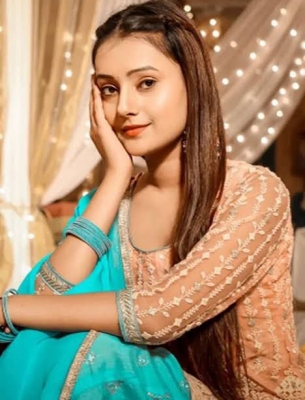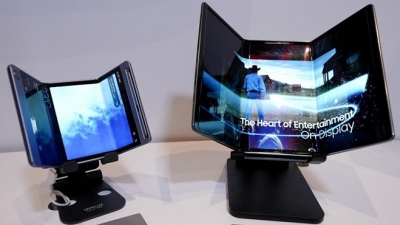
The youngest of Bollywood’s famous Kapoor brothers, he did not have their one defining and enduring cinematic image – Raj’s naive “tramp” identity in the Charlie Chaplin tradition or Shammi’s Elvis-like jiving, rebellious “playboy” persona, but went to surpass both in sheer diversity of his acting.
With his copybook good looks, rakish smile, infectious charm, toothy grin and languid drawl, or the air of earnestness, playing romantic roles, be they of businessmen, police inspectors, college students, et al came naturally to him, but Shashi Kapoor went on to play more ‘common man’ roles, decadent princes, aging poets and even angels with the same charm and intensity.
Born on March 18, 1938 in the then Calcutta to Prithviraj Kapoor and Ramsarn ‘Rama’ Devi, Balbir Raj ‘Shashi’ Kapoor was destined to walk in his family’s footsteps on the silver screen.
Though he first appeared on screen as a child artiste in “Bachpan” (1945), he became more known as the young version of Raj Kapoor in his elder brother’s directorial debut “Aag” (1948) and the more acclaimed “Awara” (1951), and also worked with Ashok Kumar in blockbusters such as “Sangram” (1950) and “Samadhi” (1950).
His first lead role was as a hardcore fanatic in Yash Chopra’s bold “Dharmputra” (1961), but this happened to be a one-off as Shashi was more suitable as a lover-boy who always got the girl — eventually. In this avatar, he once even pipped Amitabh Bachchan — in “Kabhi Kabhie” (1976).
Shashi Kapoor was also famous as a reasonable foil to the ‘Angry Young Man’ in a dozen films, from “Roti Kapda Aur Makaan” (1974) to “Akayla” (1991), and including classics like “Trishul” (1978), “Shaan” (1980), “Silsila” (1981), “Namak Halaal” (1982). It was in one of these roles where he once spoke the four most iconic and immortal words in Bollywood’s history – “Mere paas Ma hai” in “Deewar” (1975).
However, he did not rest on his laurels but also went on to become India’s first international star, starring in several acclaimed Ivory-Merchant films, among others.
In these he was not only cast in predictable roles — a decadent nawab (“Heat and Dust”, 1982), a prince-turned-ascetic (“Siddhartha”, 1972) or a devious local noble with a hidden murderous side (in “The Deceivers”, 1988 opposite Pierce Brosnan) — but also in more realistic, nuanced ones — a lower middle-class teacher coming to grips with marital life (“The Householder”, 1963), a flamboyant Bollywood star (“Bombay Talkies”, 1970), the straight-laced ‘desi’ father in “Sammy and Rosie Get Laid” (1988), and a poet in the twilight of life and reputation (“Muhafiz”/”In Custody”).
He also went on to play the angel narrator of Mohammad Ali Jinnah’s life in “Jinnah” (1988).
But Shashi, for all his international prowess, did not neglect the Hindi film industry with appearances in 148 films between 1945 and 1998, in which he was the sole hero in 61 and a lead hero in 53 multi-starrers, supporting actor in 21, while also clocking seven guest appearances and some child artiste roles.
His filmography include such evergreen hits such as B.R. Chopra’s “Waqt” (1965), where he again happened to be the youngest brother to flamboyant elder siblings Raj Kumar and Sunil Dutt, “Jab Jab Phool Khile” (1965), opposite Nanda, the madcap “Pyar Kiye Jaa” (1966) — which happens to be among the funniest movies made in Bollywood; “Sharmeelee” (1971), opposite Rakhee, “Fakira” (1976), “Rahu Ketu” (1978), “Kaala Patthar” (1979) — where he held his own against Amitabh and Shatrughan Sinha, comic crime caper “Do Aur Do Paanch” (1980), and the gritty “New Delhi Times” (1986), where he played a crusading newspaper editor.
Then, there were some grey roles in films like “Roti Kapada Aur Makaan” (1974), “Satyam Shivam Sundaram” (1978), where he plays a man who succumbs to form over spirit, “Kalyug” (1981) — a contemporary retelling of the Mahabharata in which his character is named Karan, and is totally like his mythological namesake, including in the manner of death.
This was still not the entirety of his contribution.
In 1980, he started his own film company, using his Bollywood earnings into making films with the likes of Shyam Bengal and Aparna Sen. These included gems like “Junoon” (1978), “36 Chowringee Lane” (1981), which saw his wife, veteran theatre actor Jennifer Kendall as an aging teacher in a changing, oblivious world, “Vijeta” (1982) – a paean to the Indian Air Force, and “Utsav” (1984).
He also had acclaimed performances in some of them, particularly the 1857 revolt drama “Junoon” where it takes a stern Naseeruddin Shah to remind him of his duty, and “Utsav”.
His contribution was recognised with the Filmfare Lifetime Achievement award in 2010 and the highest accolade – the Dadasahab Phalke Award in 2015, which came just in time before his death on December 4, 2017.
In his life too, he played several roles — a member of an already famous film clan, marrying into another performance-inclined family, the Kendalls, but after a difficult romance, a producer who backed some of the best independent movies in India in the 1970s and 1980s, a theatre enthusiast, the family man who did all he could to support his household, even if it meant acting in a few rather terrible (but well-paying) movies, but above all, an eminently likeable person as all his contemporaries and co-stars can attest.
(Vikas Datta can be contacted at vikas.d@ians.in)
–IANS<br>vd










